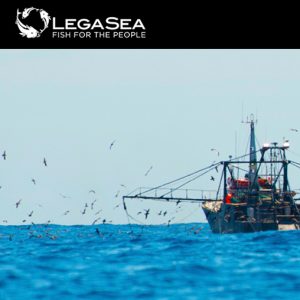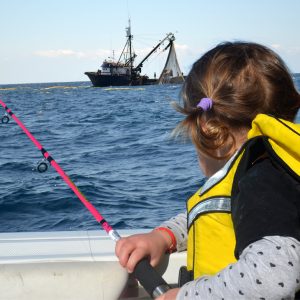The process to get monitoring cameras on board commercial fishing vessels is a debacle according to public awareness group LegaSea. The reality, it’s another promise made weeks before an election that won’t be initiated until after the following election cycle.
“Cameras on board fishing vessels have been promised by fisheries Ministers since 2014, and last week the current Minister Stuart Nash promised us cameras would be installed on half the fleet by 2024. That’s 10 years since they were first agreed by Cabinet. The question has to be asked – why is this taking so long?” says LegaSea’s spokesperson Sam Woolford.
The standard response – the technology doesn’t exist. Yet overseas, cameras are used as part of a suite of measures to monitor fishing, detect fish dumping, and protect vulnerable species such as dolphins and seabirds. The long delay in getting cameras onboard New Zealand vessels raises questions around who is actually making the decisions.
“While there will always be technical challenges with monitoring at-sea activity, Archipelago Marine Research in Canada has successfully implemented electronic monitoring in overseas fishing fleets for years. Holding up camera installation in Aotearoa on the basis of inadequate technology or cost is just a smokescreen for the fact that the government has lost control of managing our fish on behalf of all New Zealanders,” says Sam.
In 2014 the Director of Fisheries Management acknowledged that discarding “is a systemic failure of the current system and something we have not been able to get on top of from day 1 of the QMS” [Quota Management System]. The Government’s 2016 review by Michael Heron QC also reported the director’s view on discards as being “the single biggest issue we face in our wild stock fisheries”.
The New Zealand Sport Fishing Council President Bob Gutsell is concerned about the lack of action to monitor fishing and protect New Zealand’s environmental reputation.
“The government is meant to regulate the use of fisheries on our behalf. Instead, we have a situation where it will only propose measures that are acceptable to quota owners,” says Bob.
Fishing companies have been lobbying for more control over fisheries management and resisting any regulations that aren’t perceived to be in their company’s interests.
In 2017, one of the largest commercial fishing companies made a $27,000 donation to the New Zealand First Foundation and a further $10,000 to Shane Jones’ election campaign.
The real issue at hand is who is exercising power over commercial fishing; is it the fishing industry or government?
“The government seems reluctant to implement changes that will impact on commercial fishing, and the Minister and his officials seem like they are being played like a sprat on rope. We are concerned that there won’t be a resolution to this issue any time soon,” says Bob.
Sam says LegaSea and the New Zealand Sport Fishing Council are concerned this latest promise brings NZ no closer to actually getting effective monitoring.
“If there was any political desire to address the issues associated with the Quota Management System and privatisation of New Zealand’s wild fish stocks the sensible response would have been to apply a resource rental to the commercial harvest of fish. Rental income could have funded cameras years ago.”
More information
Minister’s media release. Stuart Nash. 4 September 2020. Cameras rolled out further across fishing fleet. https://www.beehive.govt.nz/release/cameras-rolled-out-further-across-fishing-fleet
Archipelago Marine Research Ltd https://www.archipelago.ca/
Michael Heron QC report. 15 September 2016 https://rescuefish.co.nz/wp-content/uploads/2020/04/Heron-report-15-Sept-2016.pdf
Resource rentals. Rescue Fish policy 7.4.7 pp20-21. LegaSea. https://rescuefish.co.nz/wp-content/uploads/2020/05/Rescue-Fish-policy-May-2020.pdf





